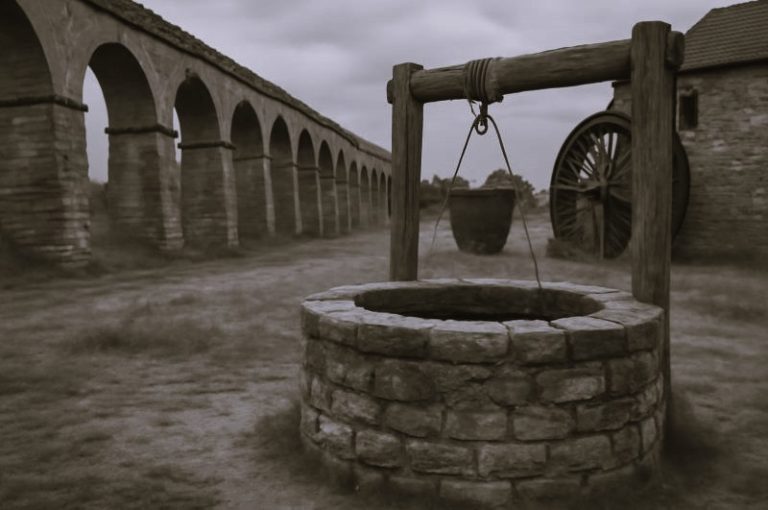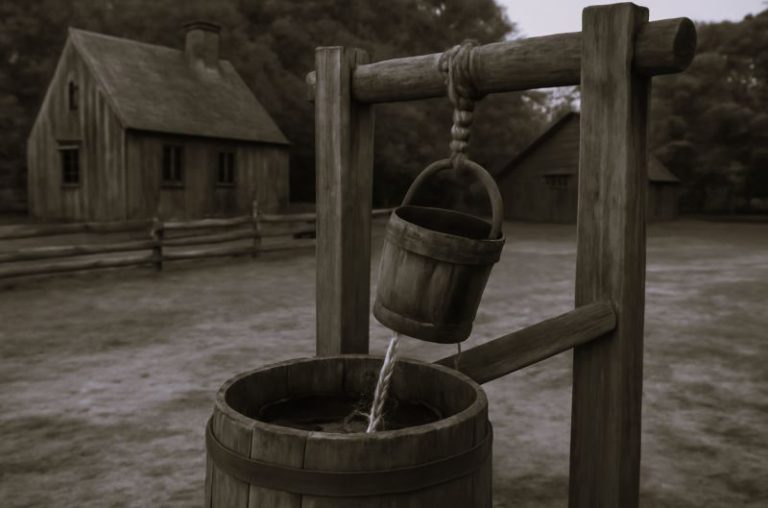

A New Social Order
About 12,000 years ago, human communities started to function very differently than in the past. Rather than relying primarily on hunting or gathering food, many societies created systems for producing food. By about 10,000 BCE, humans began to establish agricultural villages.
This had massive ramifications on the social sphere, marking an important departure from past social systems; people lived in larger, denser, and more permanent settlements, and not everyone had to devote their full time to food production. Since there was no need for all residents to devote themselves full time to producing food, specialization within society was made possible. Thus, surplus food, food that did not go directly to farmers’ families, was distributed to members of the society.
Another notable effect of this new social order was the evolution of the idea of ownership; contrary to migrating hunter-gatherer bands, farmers invested a great deal of their time and energy in cultivating specific areas of land, and as such they were attached to them. As this likely lead to disputes, strong leaders and codes of conduct evolved in response.
The advent of agriculture did not happen simultaneously and completely everywhere in the world; some communities adopted farming earlier or more fully than others, and some did not adopt it at all. Despite this variability, however, farming undeniably revolutionized human history. Farming settlements spread rapidly all over the world; humans had foraged for over a million years, and yet, within the last 12,000 years, farming has replaced foraging almost entirely. Very few foraging-based systems survive to this day.
What kinds of social changes resulted from this transformation of food production? The surplus food that agricultural systems could generate allowed for people to live in larger, more permanent villages. Villages were more productive not only agriculturally but creatively. People produced textiles, pottery, buildings, tools, metal work, sculptures, and painting, which were both directly tied to agriculture and to settlement in bigger villages.

Farming began a process of intensification, which meant that many more people could be sustained in a given land area since more calories could be produced per acre. As a result, the world population rapidly rose. Between 10,000 and 1000 BCE, the population of the world went from about 6 million to about 120 million. With more people, societies needed to change in unprecedented ways and become more sophisticated with how they organized human life.
While the agricultural revolution certainly had something to do with the development of increasingly complex societies, there is considerable debate about why some agricultural societies ultimately developed into advanced civilizations while others did not. Indeed, in some cases, it seems like complex political orders were the cause rather than the consequence of the development of agricultural systems. Historians and anthropologists are still trying to understand what other variables were at play, such as large-scale irrigation projects, warfare, trade, geography, and competition. Each society grew more complex in response to its own set of environmental, social, and political stimuli.
Larger Social Group Formation
In various parts of the world, including the valleys of the Tigris-Euphrates, Nile, Indus, and Huang rivers, larger and denser settlements began to emerge. These large concentrations of people are referred to as complex societies or civilizations, which share many features, including having a dense population, an agriculture-based economy, a social hierarchy, a division of labor and specialization, a centralized government, monuments, record-keeping and writing, and complex systems of belief.
These complex societies most often took the shape of cities or city-states like Uruk and Ur. These first cities were nexuses of power, production, culture, and innovation. Sustaining these cities was not easy, however. It required extensive and often irreversible manipulation of the surrounding environment in order to extract energy in the form of firewood, materials for building like stone, and resources like food and water. Because of this, these cities were very sensitive to fluctuations in weather and climate. A flood could destroy the entire supply of barley, for example, and a drought could make water supplies worryingly scarce. Because these societies were densely populated, disease, conflict, and shortages were felt even more dramatically. An outbreak of a disease could quickly become an epidemic. In response to these vulnerabilities, these communities developed ways to anticipate the changes in their natural environments, such as storing food and water.
As these small communities developed from small villages to city-states with thousands of residents, they were met with greater challenges and needed to develop mechanisms of social organization to address these obstacles more effectively.
Formation of Governments and Social Classes
Civilizations evoke images of stone walls, monuments, and roads, but they are more than robust physical infrastructure. To facilitate the organization and administration of these large, dense communities, people began to create social infrastructures: economic, political, and religious institutions that created new social hierarchies. These hierarchies were populated with people playing specialized roles, such as professional administrators, farmers, artisans, traders, merchants, and spiritual leaders. Additionally, due to increased trade and conflict with external civilizations, cities required diplomats, armies, and centralized rulers.

Most cities grew out of villages, and some ultimately became city-states, which are self-governing urban centers and the agricultural territories under their control. The surplus food production generated by villages in the vicinity allowed for some residents not to participate in food production, which led to the development of distinct specialized roles and associated classes.
In order to facilitate cooperation between these many different classes and to organize large numbers of people to work together for the large-scale construction of irrigation systems, monuments, and other projects, leaders were required, comprising a new social class. Political leadership would take many different forms in the first civilizations, though powerful states, centralized systems of government and command, were the norm.
Originally published by the Khan Academy under the terms of a Creative Commons Attribution-NonCommercial-ShareAlike 3.0 United States license.






